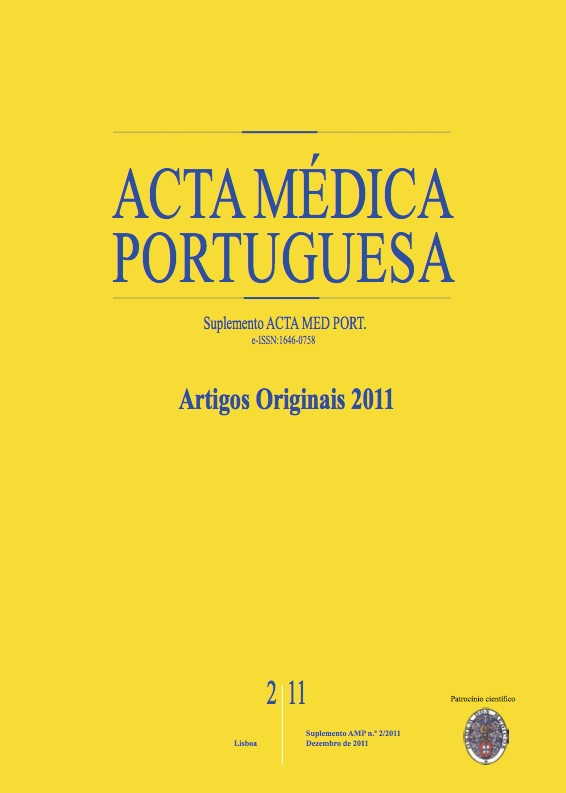Toscana virus in the Portuguese population: serosurvey and clinical cases.
DOI:
https://doi.org/10.20344/amp.1443Abstract
Toscana virus (Phlebovirus genus, Bunyaviridae family) is a neurotropic virus which circulates in the Mediterranean Basin. Although Portugal has been the second country where its presence was reported, the existence of this virus in our country has been referred only sporadically, and there is a lack of knowledge regarding the prevalence of antibodies in the population. Thus, the objective of this study was to analyse the prevalence of antibodies anti-Toscana virus in the human population in our country. Sero-epidemiological investigations were performed with indirect immunofluorescence assay (IFA) and enzyme linked immunosorbent assay (ELISA) tests. The study population consisted of a control population (blood donors, n=150), a population considered at risk (n=236) and a population of individuals with symptoms and laboratory diagnostic request for vector-borne viruses. The latter population was divided into two groups: those individuals with neurological symptoms (n=165) and those without neurological symptoms (n=373). We tested sera from a total of 924 individuals. The seroprevalence of IgG antibodies in the control population was 2%. In the population considered at risk, the prevalence was 3.4%. In the population with central nervous system disease, we detected a seroprevalence of 4.2%. For the same type of antibodies and in subjects without central nervous system disease, the prevalence was 1.3%. Five cases of recent infection (3%) were detected in the population with neurological signs. Those infections have been acquired in the districts of Faro, Coimbra, Aveiro and Lisbon. The associated clinical diagnoses were meningitis, meningoencephalitis and rash. The observed seroprevalences were, in general, lower than reported in other endemic countries. Only 5 of the 29 sera which gave positive results by IFA and ELISA were confirmed by plaque reduction neutralization tests with the Italian strain ISS.Phl.3. This can indicate the presence of more than one Toscana virus serotype circulating in Portugal and emphasizes the need for more research about this etiological agent in our country.Downloads
Downloads
How to Cite
Issue
Section
License
All the articles published in the AMP are open access and comply with the requirements of funding agencies or academic institutions. The AMP is governed by the terms of the Creative Commons ‘Attribution – Non-Commercial Use - (CC-BY-NC)’ license, regarding the use by third parties.
It is the author’s responsibility to obtain approval for the reproduction of figures, tables, etc. from other publications.
Upon acceptance of an article for publication, the authors will be asked to complete the ICMJE “Copyright Liability and Copyright Sharing Statement “(http://www.actamedicaportuguesa.com/info/AMP-NormasPublicacao.pdf) and the “Declaration of Potential Conflicts of Interest” (http:// www.icmje.org/conflicts-of-interest). An e-mail will be sent to the corresponding author to acknowledge receipt of the manuscript.
After publication, the authors are authorised to make their articles available in repositories of their institutions of origin, as long as they always mention where they were published and according to the Creative Commons license.









